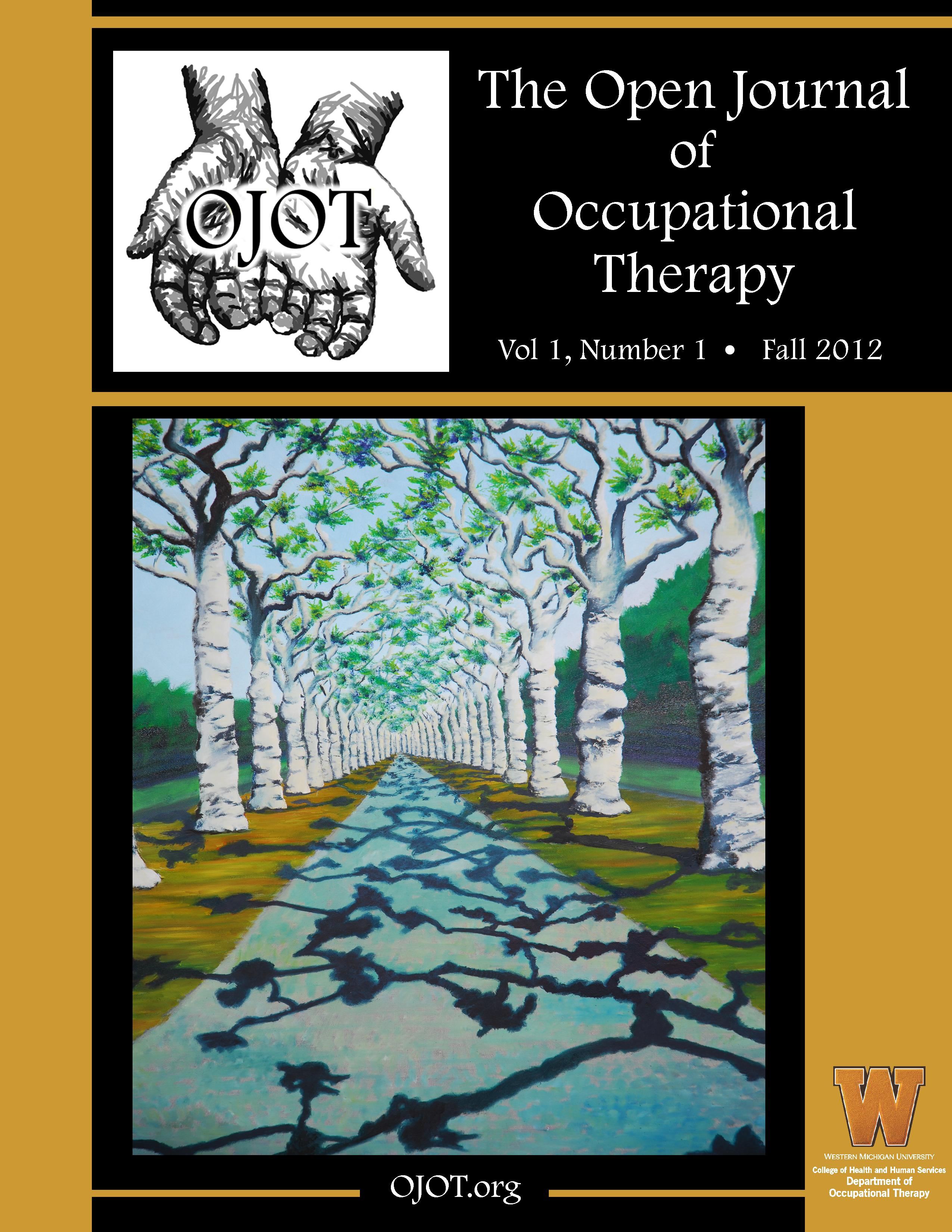ScholarWorks > HHS > OT > OJOT > Vol. 2 > Iss. 4 (2014)
Credentials Display
Stephen Isbel, HScD; Christine Chappara, PhD; David McConnel, PhD; Judy Ranka, PhD
Abstract
Background: This study examined the efficacy of a home-based Constraint Induced Movement Therapy (CI Therapy) protocol with eight poststroke survivors.
Method: Eight ABA, single case experiments were conducted in the homes of poststroke survivors. The intervention comprised restraint of the intact upper limb in a mitt for 21 days combined with a home-based and self-directed daily activity regime. Motor changes were measured using The Wolf Motor Function Test (WMFT) and the Motor Activity Log (MAL).
Results: Grouped results showed statistically and clinically significant differences on the WMFT (WMFT [timed items]): Mean 7.28 seconds, SEM 1.41, 95% CI 4.40 – 10.18, p = 0.000; WMFT (Functional Ability): z = -4.63, p = 0.000). Seven out of the eight participants exceeded the minimal detectable change on both subscales of the MAL.
Conclusion: This study offers positive preliminary data regarding the feasibility of a home-based CI Therapy protocol. This requires further study through an appropriately powered control trial.
Recommended Citation
Isbel, S., Chapparo, C., McConnell, D., & Ranka, J. (2014). Home-based Constraint Induced Movement Therapy Poststroke. The Open Journal of Occupational Therapy, 2(4). https://doi.org/10.15453/2168-6408.1120


